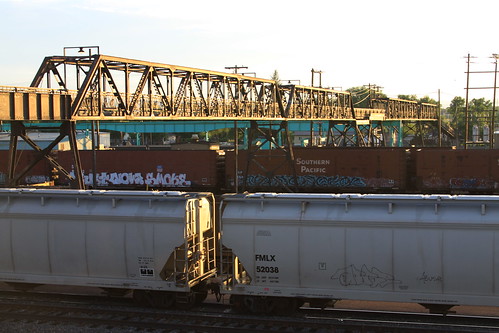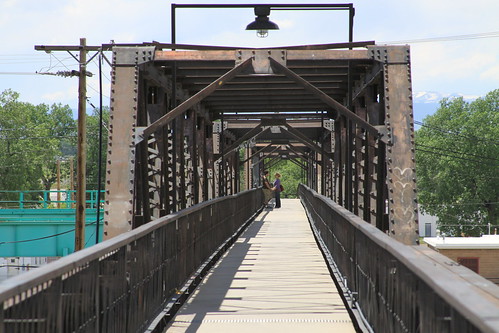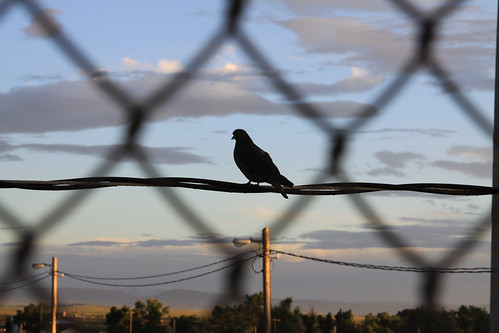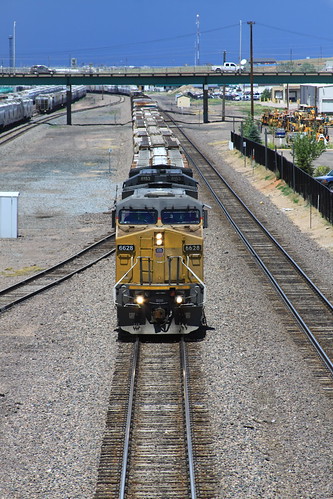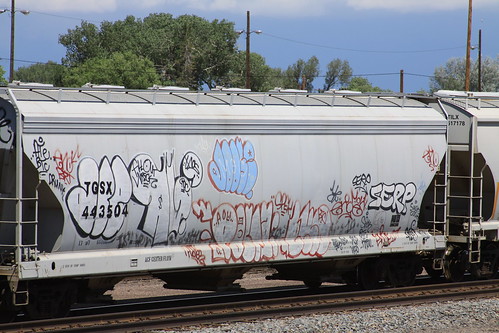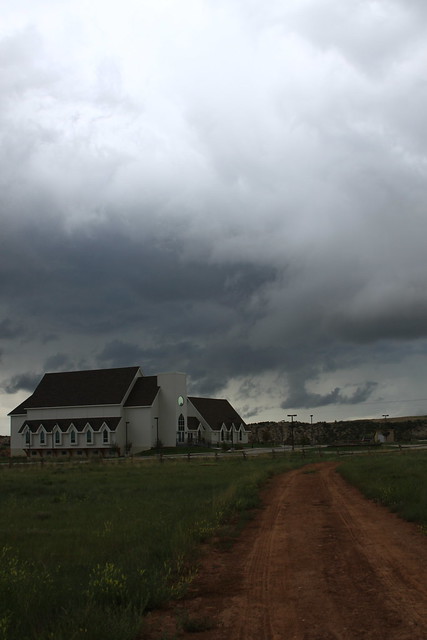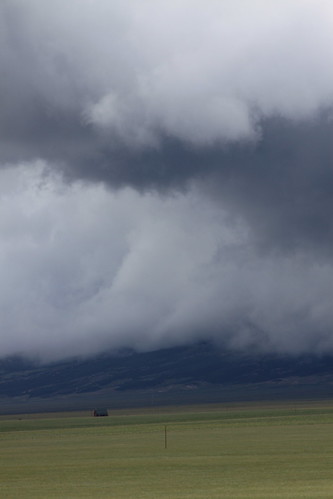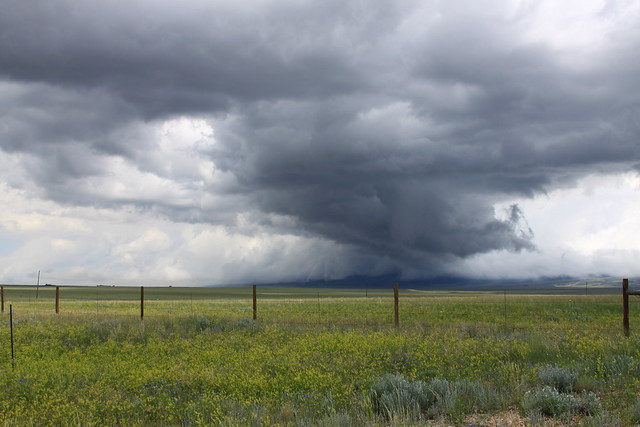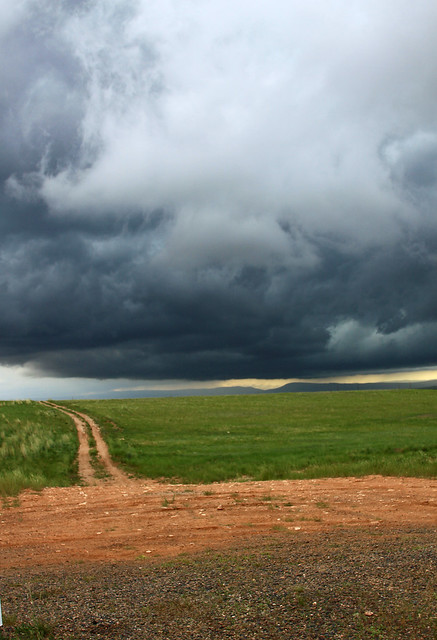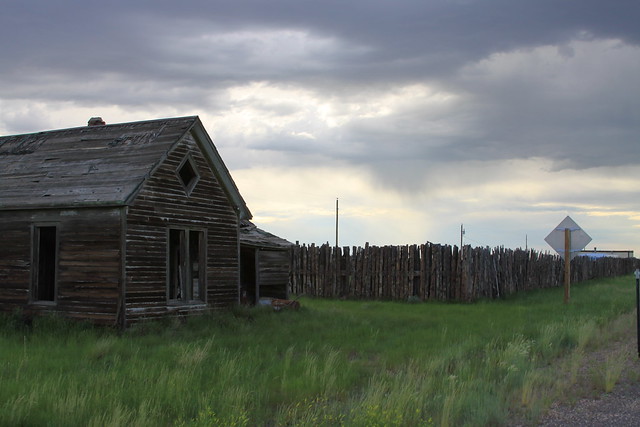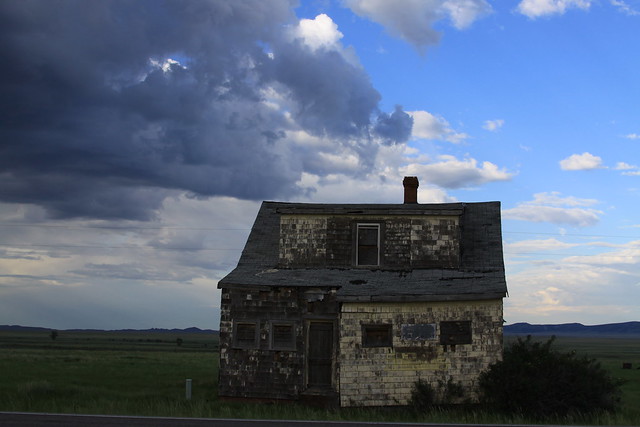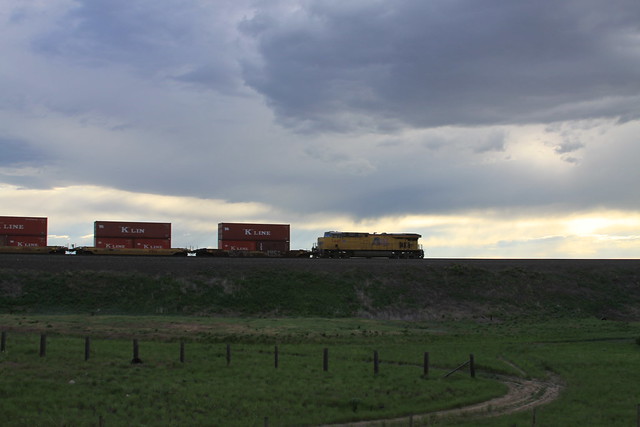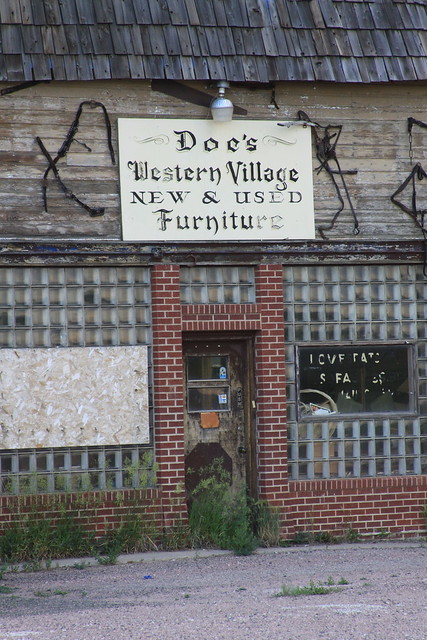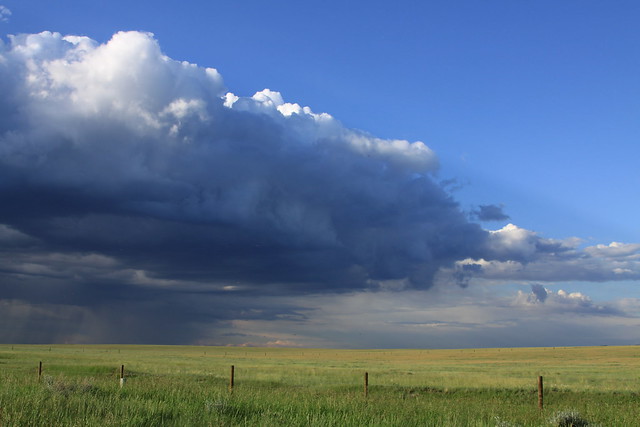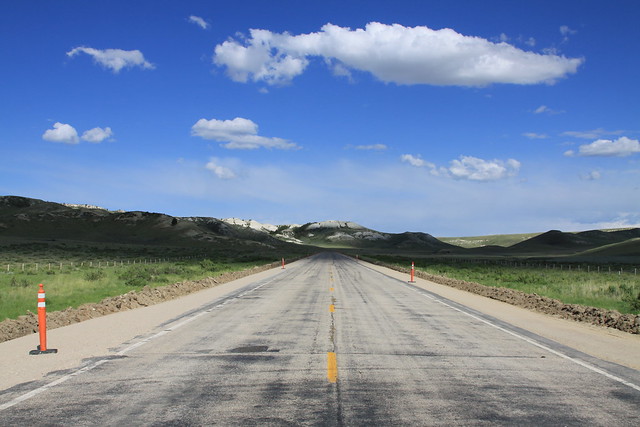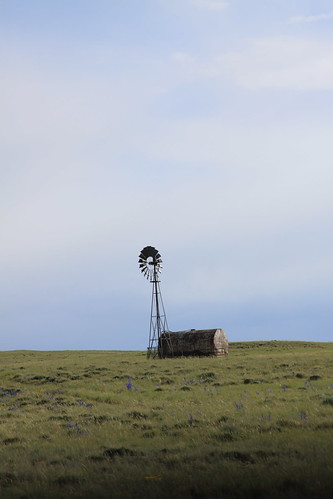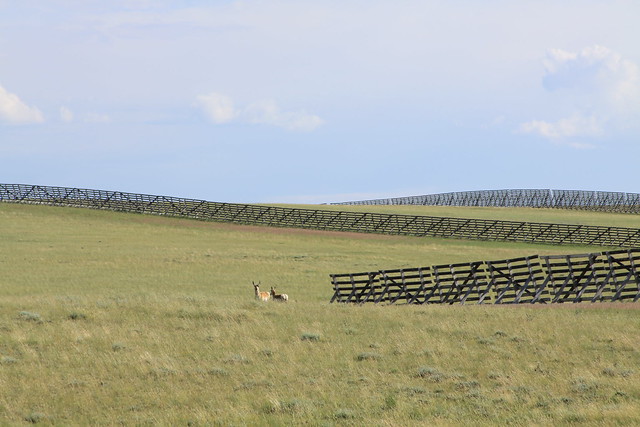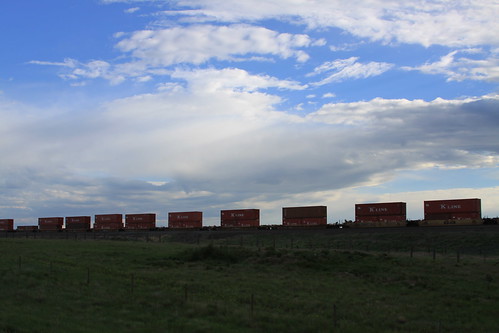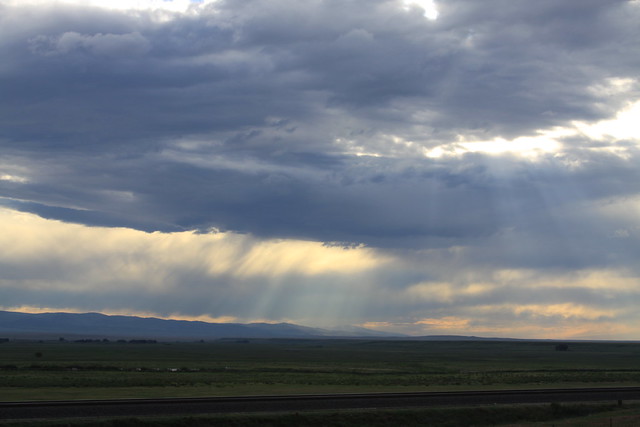Since I was in Laramie, did I go to "the spot" while I was there, some might ask? No. I'm not going to further that landowner's angst and resentment by trooping through his private property to gawk at a murder site. My respect for private property is too strong to do so, and I don't need to get arrested for trespassing. But I did drive through the Sherman Hills subdivision just to see how much it has changed in the last ten years.
As the
Vanity Fair article (March '99) on the Shepard murder made clear, and as Beth Loffreda talks about in her book, Matt was murdered basically in between two subdivisions still under construction at the time; the empty field between them, stretching a little more than a half mile wide in either direction, buts up against the rolling hills of the more expensive district of Sherman Hills. These foothills roll straight into the walls of Telephone Canyon, the Medicine Bow National Forest, and a large, beautiful state park about nine miles up the road.

The two subdivisions couldn't be more different. The first one is everything that gives me nightmares about subdivisions: large, overpriced houses so close together you can listen to your neighbor breathe at night, tiny yards, even less privacy... just an upper middle-class nightmare. It's still growing, too-- you can see dirt in some of these yards and a couple of unfinished frames at the end of the street. (And yes, that is a throw pillow on the sidewalk. I have no clue.) No trees or room for lawns, but wide, overdone infrastructure: wide, paved streets, street lights, sidewalks. I pass kids on plastic Power Wheels and playing horse with their friends in the driveways, bouncing their basketballs off of garage doors. It's about as close to a pre-fab middle class Americana as you'd ever want to see. Give me west Laramie any day.
Take a bit of a drive down Grand Avenue one more street to the east and you end up in Sherman Hills, which is a bit of a mixed neighborhood. It started out as just a normal neighborhood on the edge of town, but a large tract behind it was bought by developers and turned into houses that run into the upper six figures to a low million. The houses to the north and east of Sherman Hills are all enormous, high-windowed affairs that no one in their right mind would want to heat in the middle of the winter. They have more rooms than most families could possibly need, and many sit right on the top of these low, rolling hills, where the view is spectacular but the raging winter winds sometimes blow hard enough to knock the fillings out of your teeth. (This is why older homes are often nestled on slopes and low-lying areas, or alternately, have tree breaks around them.)
The houses themselves are massive, grandiose-- and yet they try to keep an "out of town" profile as well. Unlike the area around Bill Nye, in this stretch of the subdivision there are few paved roads, and the few that are there are one-laners, winding and narrow, with no shoulder to speak of. They're barely marked with street signs, even. The landscaping around them is heavily manicured but natural: scrub juniper and cedars, imported granite rock, deer antlers. One yard has a four-foot sculpture made out of what looks like old elk antlers twisting up into the air, perfectly positioned on a gently sloping hill of native grass. The main colors are deep cedar green, prairie yellow, pink feldspar boulders accented with lichen. There are no livestock, feed pens or horse sheds like in the liminal neighborhoods on the other side of Grand Avenue, either; you'll see no llamas here. Offhand, I don't even see a watered lawn within eyesight. There might be some, but I'll be darned if I drove by any.
Those gravel roads aren't a sign of recent development, either; the house near the murder scene was under construction when Matt was murdered. It was graded as a gravel road, and it has remained one still. And, every one of these enormous, beautiful houses sits on up to an acre of land. Many of them are far enough apart to give the illusion that they have no neighbors, even though they might be just on the other side of the same hill. While the newspaper reports used words like "lonely and "deserted" in their descriptions of this area on the night Matt died, the real estate catalog probably calls it "private" and "secluded."
There's a strange, careful construction of identity in this area: they want to live in opulence and they want to live sequestered from the rest of town in their own private luxury, but they want to maintain the illusion of a rugged, rural existence. This isn't town space, the landscape proclaims. And yet, it cannot really be anything else.
And yet,
this is where I finally start seeing buck-and-rail fences in Laramie, Wyoming-- dozens of them, essentially, and I see some in
both of these neighborhoods. (The most are in Sherman Hills, however.) Normally, the only place you'll ever consistently see buck fences is around state maintained areas, like city or state parks and rest areas, or around monuments like up on the Lincoln Highway just to the east. And yet here, every fifth house or so has some kind of wooden or split-rail fence around it, and the buck-and-rail is one of the most popular I see.

As I stare at the landscape around me and take in the aura, it strikes me how different my perception of this place is from my students, from the thousands of people who have tried to imagine what this spot is like and what that buck fence represents. That fence wasn't there because this was the Wild West. It was there precisely because this place
wasn't the Wild West. For me at least, the buck fence was a sign of class difference and exclusion,
not small town ideals, or cowboy morality, or even rural existence. The buck fence was there because this land had been co-opted to create a middle class utopia and an upper class getaway community; it was there because the wilderness and rural edges of Laramie were squeezed out and they wanted to create the illusion that they had never disappeared. When look at these fences, I don't see of a story of western outlawry, but a story of two poverty-class men who kidnapped a rich kid because he was gay and murdered him on the site where the difference between them was still under construction, in the secluded red earth hills east of Laramie, on shaggy pine rails.



